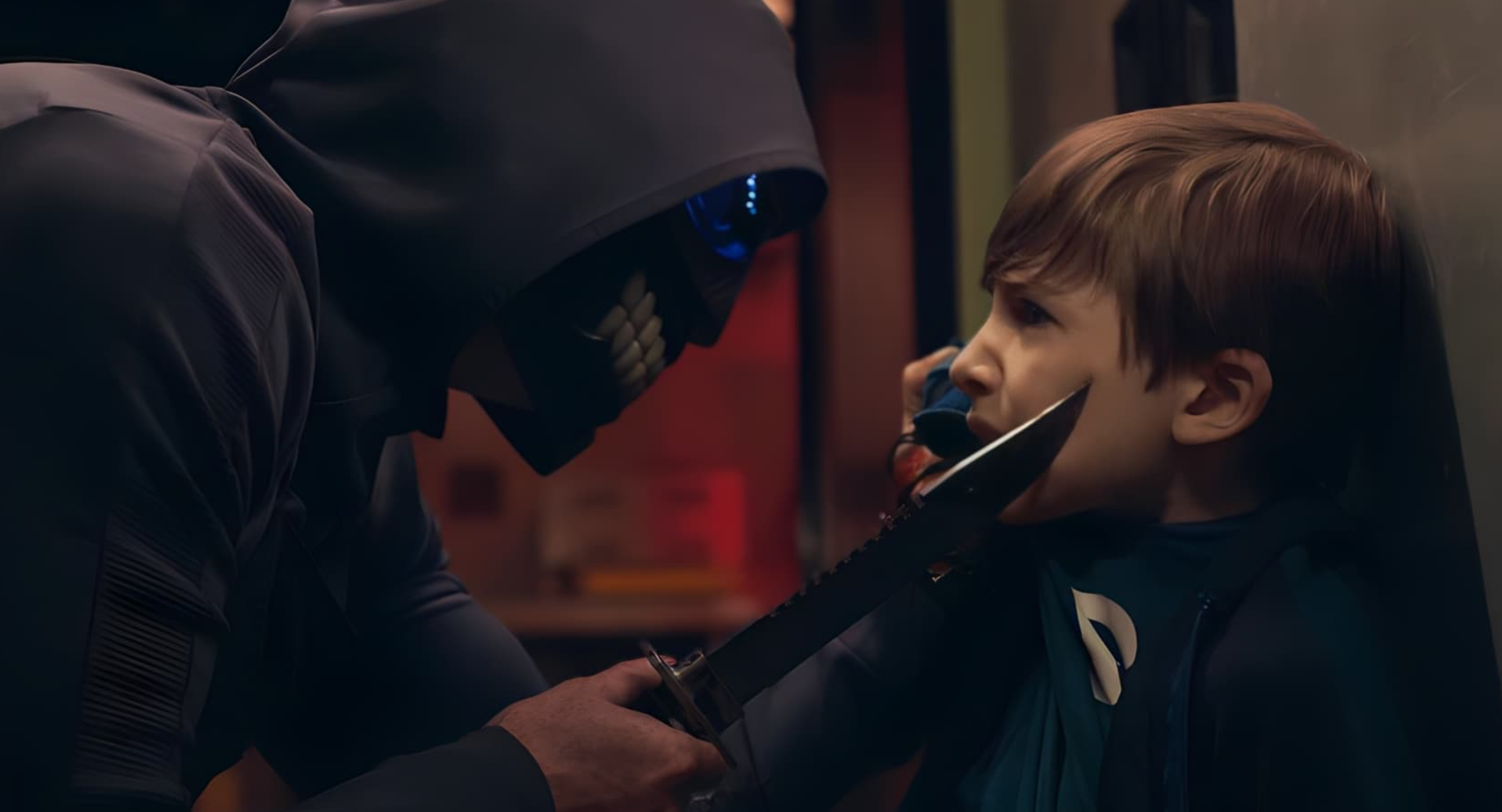Stream – Film Review
Published October 23, 2024

Michael Leavy’s Stream is a nostalgic love letter to slasher horror that blends old-school scares with a modern edge. With a powerhouse ensemble of horror icons, including Danielle Harris, Tony Todd, Jeffrey Combs, and David Howard Thornton, the film promises gore, tension, and inventive kills—elements that should delight fans of the genre. Yet, despite its high ambitions and genre pedigree, Stream doesn’t quite escape the pitfalls of disjointed storytelling and overstuffed ideas, making it more of a mixed bag than a horror classic.
The film’s premise is immediately captivating, setting the stage at a remote hotel where the Keenan family, already fraying at the edges due to their daughter’s rebellious behavior, finds themselves trapped in a nightmare orchestrated by a group of masked killers. The live-streaming element, where the murders are broadcast to eager viewers bidding on the players, injects a fresh take on the familiar slasher formula, echoing the voyeuristic horror of films like Hostel and The Purge. The concept of a killer game being streamed for profit resonates with the modern era, tapping into fears about technology’s dark side.
However, this is where the movie’s cracks start to show. While the setup is effective, Stream stumbles with its pacing. The film tries to juggle multiple plot threads simultaneously, introducing various masked killers (dubbed “players”) with differing personalities and methods, while also exploring the dynamics of the Keenan family, retired officer Dave Burnham, and hotel manager Mr. Lockwood (Jeffrey Combs). The sheer number of characters and subplots often detracts from the film’s focus, leading to a fragmented narrative that can feel overwhelming and hard to follow.
One of Stream‘s most significant strengths is its cast of horror legends. Jeffrey Combs as Mr. Lockwood delivers a wonderfully sinister performance, embodying a character that’s equal parts creepy and calculating. He brings gravitas to every scene he’s in, giving the film a much-needed anchor amidst the chaos. Charles Edwin Powell’s portrayal of Roy Keenan, the desperate father trying to protect his family, is grounded and relatable, providing a touch of humanity in a film full of carnage.
Tim Reid as Dave Burnham, a retired police officer with a murky past, adds an air of mystery and unpredictability. The supporting cast of killers, especially David Howard Thornton (best known for his role as Art the Clown in Terrifier), provides an eclectic mix of terror. Thornton’s physicality and menacing presence are a standout, contributing to some of the film’s more brutal and creative kills.
Unfortunately, despite these strong performances, not all the characters are given enough room to breathe. Dee Wallace’s Linda Spring and Danielle Harris’s role feel underutilized, with their potential for more significant contributions to the narrative left untapped. The Keenan family dynamic, while emotionally charged, gets sidelined by the film’s insistence on showcasing the gore and spectacle of the live-streamed murders.
For fans of practical effects and gnarly kills, Stream doesn’t disappoint. The film revels in its slasher roots, with an array of gruesome deaths that are sure to make even the most seasoned horror aficionados squirm. Michael Leavy’s direction shines in the film’s set pieces, with tension building around every corner as the masked killers hunt their prey in increasingly inventive and violent ways. From power drills to hatchets, the kills are creative, bloody, and brutal, reminiscent of 80s slasher fare but with a modern polish.
The film’s use of masks, each player having a distinct persona, adds a layer of intrigue to the proceedings. The enigmatic Player One, the sibling duo Player Two and Player Three, and the hulking Player Four all bring their own styles of mayhem, each with their unique visual identity. While this variety adds flavor to the violence, it also muddies the waters when it comes to coherence, as the film struggles to keep all these moving parts organized.
Leavy and his team excel in creating a sense of claustrophobia and dread within the confines of the hotel. The setting, reminiscent of classic horror locales like the Overlook Hotel from The Shining, works well as an isolated battleground for the Keenan family’s survival. The dimly lit hallways, strategically placed cameras, and the looming presence of the masked killers contribute to the overall atmosphere of unease. The film’s color palette and use of shadows further evoke a retro feel, grounding it in the aesthetic of 70s and 80s horror.
Where Stream falters, however, is in its reliance on the “live-stream” gimmick. While the idea of killers being auctioned to the highest bidder and broadcast to an audience is clever, the execution feels underdeveloped. The film doesn’t fully explore the implications of this voyeuristic setup, and the focus on the bidding war element feels more like a distraction than a central theme. A more in-depth exploration of the audience’s role and their sadistic desires could have added thematic weight to the film.
Stream delivers on its promise of a bloody good time, with enough gore, tension, and memorable performances to satisfy die-hard slasher fans. Its blend of retro and modern horror elements, coupled with its talented cast, makes it a fun ride through the bloody corridors of the hotel. However, its lack of narrative focus, underdeveloped subplots, and a barrage of characters and ideas prevent it from reaching the heights of the slasher greats it draws inspiration from.
For those seeking a nostalgic, gore-filled throwback with some inventive twists, Stream will hit the right notes. But for those craving a tighter, more coherent story with emotional depth, it may feel more like a missed opportunity. Still, Michael Leavy’s film is a testament to the enduring appeal of the slasher genre, even if it doesn’t fully escape the traps it sets for itself.
